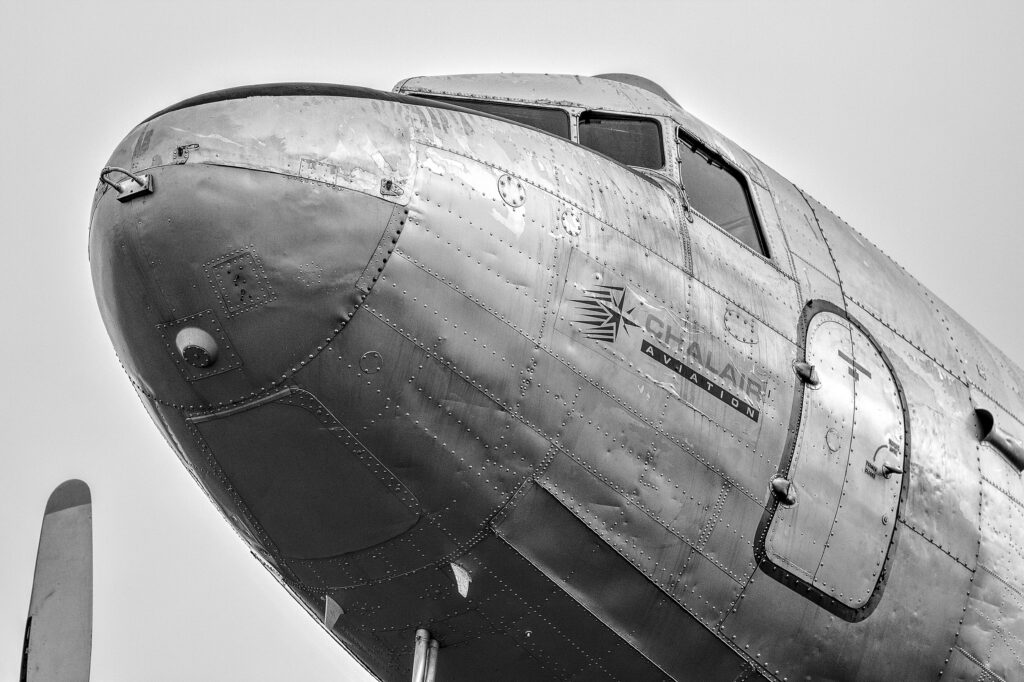If you’ve ever found yourself needing to inflate a tire in a pinch, you may have wondered if a portable tire compressor could do the trick for an aircraft tire. After all, they’re a convenient tool for keeping your car tires properly inflated. However, when it comes to aircraft tires, can the same device be used? In this article, we’ll explore the compatibility of portable tire compressors and aircraft tires, shedding light on whether you can rely on this versatile tool in aviation emergencies.

Understanding Aircraft Tires
Aircraft tires are an essential component of any aircraft, playing a crucial role in ensuring safe takeoffs and landings. These tires are designed to withstand the immense weight and pressure exerted during flight operations.
Materials used in Aircraft Tires
Aircraft tires are manufactured using specialized materials that can withstand high temperatures, extreme pressures, and the demanding conditions that come with aviation. These tires are typically made from a combination of synthetic rubber compounds, nylon fabric, steel cord, and various chemical additives. The use of these materials ensures excellent grip, heat resistance, and durability.
Design Specifications of Aircraft Tires
The design specifications of aircraft tires are specifically tailored to meet the unique requirements of aviation. These tires are designed to handle heavy loads and maintain stability even at high speeds. In addition, they also have reinforced sidewalls to prevent damage during landing impacts. The tread pattern on aircraft tires is optimized for optimal traction on both wet and dry surfaces, reducing the risk of hydroplaning during rainy conditions.
Differences between Aircraft and Car Tires
There are several notable differences between aircraft tires and car tires. Firstly, aircraft tires are significantly larger and wider than car tires, as they need to support the weight of the entire aircraft. Secondly, aircraft tires are designed to withstand higher inflation pressures, typically ranging from 200 to 300 psi (pounds per square inch), compared to the 30 to 40 psi range for car tires. Lastly, aircraft tires are constructed using stronger and more heat-resistant materials to handle the extreme conditions experienced during flight.
Overview of Portable Tire Compressors
Portable tire compressors are small devices that can be easily carried and used to inflate and deflate tires on the go. These compact compressors offer convenience and flexibility, making them a popular choice for various applications, including automotive and recreational use.
Different types of portable tire compressors
There are several types of portable tire compressors available on the market, ranging from manual hand pumps to electric-powered and even cordless models. Manual hand pumps are simple and reliable but require manual effort to operate. Electric-powered compressors, on the other hand, are more convenient and can be powered using a vehicle’s battery or a separate power source. Cordless compressors offer even greater portability by relying on rechargeable batteries.
Operation and functionality of portable tire compressors
Portable tire compressors work by drawing in ambient air and compressing it to the desired pressure. The compressed air is then delivered to the tire through a hose and nozzle. Most portable compressors come with pressure gauges, allowing users to monitor and adjust the inflation pressure as needed. Some models also incorporate automatic shut-off features to prevent over-inflation.
Benefits of using portable tire compressors
The use of portable tire compressors brings several advantages. Firstly, they provide convenience and flexibility, allowing users to inflate or deflate their tires wherever they may be. Whether it’s on a remote airfield, a roadside emergency, or a camping trip, portable compressors ensure that you are never stranded due to a flat tire. Additionally, these compressors can also be used for a variety of other applications, such as inflating sports equipment or inflatable mattresses.
Potential drawbacks of using portable tire compressors
While portable tire compressors offer convenience, there are a few potential drawbacks to consider. Firstly, portable compressors have limited capacity compared to their larger counterparts used in professional settings. This means that inflating aircraft tires, which require high pressures and larger volumes of air, may take longer or be less efficient using a portable compressor. Additionally, portable compressors may not have the same level of accuracy and precision when it comes to pressure readings, which can be critical for aircraft tire inflation.

Pneumatic Requirements of Aircraft Tires
Understanding the correct air pressures needed for aircraft tires is essential for safe and efficient operation. Proper tire inflation ensures optimal contact with the runway surface and helps distribute the aircraft’s weight evenly.
Understanding the air pressures needed for aircraft tires
Aircraft tires have specific manufacturer-recommended inflation pressures, which are determined based on factors such as the aircraft’s weight, speed, and tire size. These pressures are typically expressed in psi and can range from 200 to 300 psi for commercial aircraft. It is essential to consult the aircraft’s maintenance manual or seek guidance from a certified mechanic to ensure proper tire inflation.
Effects of improper tire inflation on aircrafts
Improper tire inflation can have severe consequences for aircraft safety and performance. Under-inflated tires can lead to increased rolling resistance, excessive heat buildup, and reduced fuel efficiency. Over-inflated tires, on the other hand, can result in reduced traction, decreased braking efficiency, and uneven wear patterns. These factors can compromise the aircraft’s ability to land and take off safely, posing a significant risk to both passengers and crew.
Methods of inflating aircraft tires
Inflating aircraft tires requires specialized equipment and expertise. Aircraft maintenance personnel typically use professional-grade tire compressors that provide accurate pressure readings and sufficient air volume. These compressors are equipped with safety features and have the capacity to handle the high pressures required for aircraft tires. Additionally, dedicated tire inflation systems may be present in some hangars or maintenance facilities, offering a more efficient and controlled method of tire inflation.
Feasibility of Using Portable Tire Compressors on Aircraft Tires
While portable tire compressors offer convenience, their feasibility for inflating aircraft tires is a topic of debate within the aviation community. Several factors need to be considered before deciding whether using portable compressors for aircraft tires is a viable option.
The capacity of portable tire compressors
One of the primary concerns when using portable compressors for aircraft tires is their capacity to deliver the necessary air volume and pressure. Aircraft tires typically require large quantities of air at high pressures, which may exceed the capabilities of most portable compressors. The limited capacity of portable compressors could result in extended inflation times or incomplete inflation, posing safety risks.
Potential risks and challenges of inflating aircraft tires with portable compressors
Inflating aircraft tires with portable compressors can introduce several risks and challenges. Firstly, the accuracy and reliability of pressure readings from portable compressors may not meet the stringent standards required for aircraft operations. This could result in over-inflation or under-inflation, compromising the aircraft’s performance and safety. Secondly, portable compressors may not have sufficient cooling mechanisms to handle the heat generated during prolonged use, potentially leading to equipment failures.
Expert opinions on using portable compressors for aircraft tires
Aviation experts and professionals hold differing opinions regarding the use of portable compressors for inflating aircraft tires. While some argue that portable compressors can be a viable backup option in emergency situations, most experts emphasize the importance of using dedicated professional-grade equipment for aircraft tire inflation. These experts stress the need for accuracy, reliability, and safety when dealing with critical components like aircraft tires.

Alternate Solutions for Inflating Aircraft Tires
Considering the potential limitations of using portable compressors on aircraft tires, several alternative solutions exist that provide better control, accuracy, and safety.
Professional aircraft tire compressors
Professional aircraft tire compressors, often found in aviation maintenance facilities, are purpose-built for inflating aircraft tires. These compressors have the capacity to deliver the necessary air volume and pressure required for safe tire inflation. Equipped with precise pressure gauges and safety features, professional-grade compressors ensure accurate inflation and minimize the risks associated with improper tire pressures.
In-flight tire pressure maintenance systems
In-flight tire pressure maintenance systems provide a proactive approach to maintaining proper tire inflation during flight operations. These systems continuously monitor tire pressures and automatically adjust them as needed, ensuring optimal performance and safety. While these systems require initial installation and periodic maintenance, they offer the advantage of real-time tire pressure management without the need for manual intervention.
Use of Nitrogen in Aircraft tires
An alternative to traditional compressed air, the use of nitrogen for aircraft tires has gained popularity in recent years. Nitrogen offers several advantages, including reduced oxidation and moisture absorption, resulting in more stable tire pressures over time. Nitrogen is also less prone to temperature-related pressure changes, making it an attractive option for maintaining consistent tire pressures during flights. However, nitrogen inflation systems require specialized equipment and installation.
Regulations About Aircraft Tire Inflation
Regulatory bodies, such as the Federal Aviation Administration (FAA) and international aviation standards organizations, have established guidelines and regulations regarding aircraft tire inflation to ensure the highest level of safety and performance.
FAA regulations regarding aircraft tire inflation
The FAA provides comprehensive guidelines for aircraft maintenance, including specific requirements for tire inflation. Maintenance personnel are required to comply with the manufacturer’s specifications for tire inflation, ensuring proper pressures are maintained. The FAA also emphasizes the importance of accurate pressure measurement equipment and proper training for personnel involved in tire maintenance.
International aviation standards on tire pressures
International aviation standards organizations, such as the International Civil Aviation Organization (ICAO) and the European Aviation Safety Agency (EASA), also provide guidelines on aircraft tire inflation. These standards align with the principles set forth by the FAA and promote safety and uniformity in tire maintenance practices worldwide.
Penalties for non-compliance to aviation tire inflation regulations
Non-compliance with tire inflation regulations can have serious consequences. In addition to the potential safety risks, violators may face penalties, fines, or even suspension of operating certificates. It is crucial for operators and maintenance personnel to adhere to these regulations and ensure proper tire inflation to maintain a high level of safety and reliability in aviation operations.
Safety Precautions While Using Portable Tire Compressors
When using portable tire compressors, it is essential to follow safety precautions to minimize risks and ensure proper tire inflation.
Handling of portable tire compressors
When handling portable tire compressors, ensure proper grounding and avoid operating them in wet or damp conditions. Follow the manufacturer’s instructions regarding power sources, connections, and safe operating practices. Use caution when handling the compressor and keep it away from open flames or hazardous materials.
Ensuring correct pressure readings
To ensure accurate pressure readings, use a calibrated pressure gauge and compare the readings with the manufacturer’s specifications. Regularly check the condition and accuracy of the pressure gauge to maintain reliability. Avoid relying solely on the built-in pressure gauges of portable compressors, as their accuracy may vary.
Storage and maintenance of portable tire compressors
Proper storage and maintenance of portable tire compressors are crucial for their longevity and performance. Store the compressor in a clean and dry environment, protected from dust and moisture. Regularly inspect the compressor for any signs of wear, damage, or loose connections. Follow the manufacturer’s guidelines regarding maintenance, lubrication, and filter replacement to ensure optimal performance.
Conclusion
In conclusion, while Portable tire compressors offer convenience and flexibility, they may not be the ideal solution for inflating aircraft tires. The capacity limitations, potential inaccuracies in pressure readings, and safety risks associated with using portable compressors make them less suitable for critical aviation applications. Instead, it is recommended to rely on professional-grade tire compressors, in-flight pressure maintenance systems, or nitrogen inflation systems for optimal safety, accuracy, and performance when dealing with aircraft tires. Compliance with regulatory guidelines and adherence to proper safety precautions are imperative to ensure the highest level of safety and efficiency in aviation operations.
